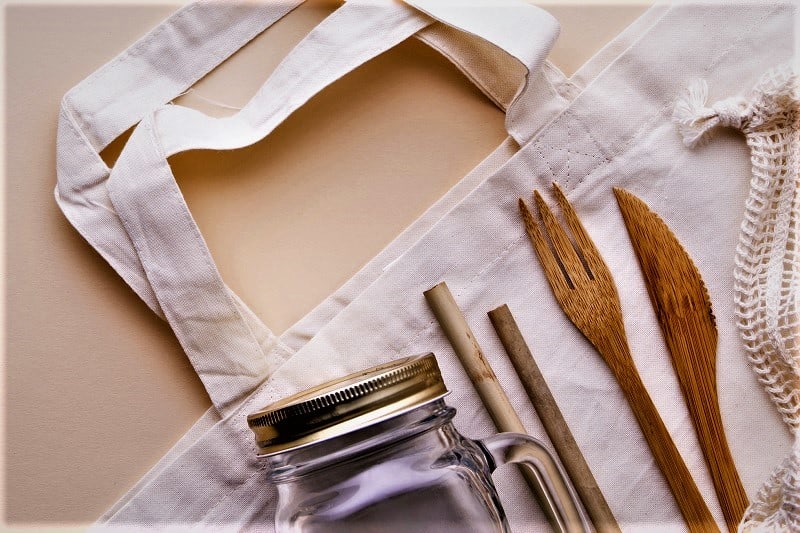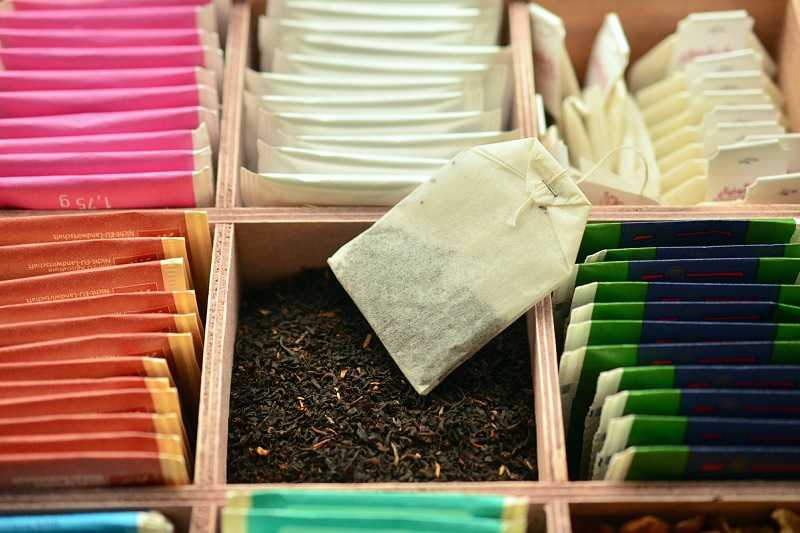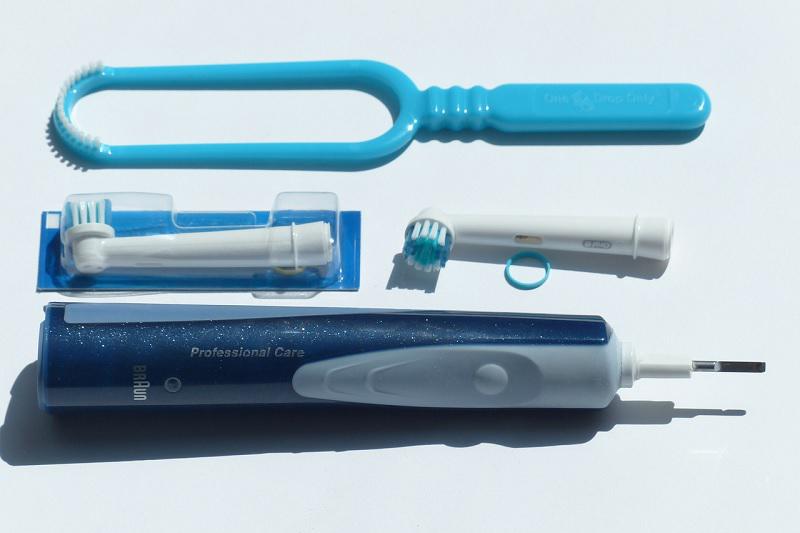If you’re looking for practical and easy ways to reduce your plastic use, you’re in the right place! In this guide we’ve listed 73 ways to use less plastic at home, work, the supermarket, cafes and restaurants, and while travelling.
Plastics are cheap and convenient materials in the short term, but they are having a devastating long-term effect on the environment. There is also growing evidence that they are having a negative effect on our health.
The main advantage of plastics is that they can be easily moulded into different shapes, which makes them very versatile.
Natural polymers such as natural rubber and shellac have been used for thousands of years, but synthetic plastics didn’t exist until 1907, when Leo Baekeland developed Bakelite.
Other plastics were developed in the following decades including neoprene, polystyrene, nylon and polytetrafluoroethylene (Teflon).
By 1950, plastics were being mass produced and their use was exploding. In 2016, the world produced around 335 million metric tonnes of plastics a year (source), and this number is still rising.
Packaging accounts for 67% of the plastic waste in the UK (source), which is higher than in other EU countries.
This that means we as consumers have a lot of power to reduce the amount of plastic waste we produce by simply choosing to buy products with less plastic packaging.
In this guide we’ll explain how you can reduce your plastic waste footprint at home, at the supermarket, while travelling and when you’re out and about.
Table of Contents
At Home
In the Kitchen
A lot of the plastic waste we produce each week comes from the kitchen, so it’s a good place to start. If you want to know what to prioritise, take a look in your bin to see which plastic items you use the most.
1. Get milk delivered in glass bottles
According to the Guardian, the percentage of UK milk packaged in glass bottles decreased from 94% in 1975 to just 3% in 2016.
The milkround is now making a comeback though as people are choosing to make more eco-friendly choices. Getting milk delivered in glass bottles won’t make a massive difference to your overall plastic consumption, but it’s an easy way to start.
Dairy UK’s “Find Me A Milkman” website lets you search for local milk delivery services using your postcode.
2. Stop using cling film
Cling film is a convenient but non-essential item found in most kitchen cupboards.
Try storing leftover food in a bowl or reusable tub instead. One eco-friendly alternative to cling film is using a reusable beeswax wrap such as this one made by Bee’s Wrap.
It has natural antibacterial properties and can be washed and reused, so there’s no waste.
3. Use bamboo or stainless-steel straws
Giving up plastic straws doesn’t mean you have to give up straws altogether! Try using bamboo straws like these or stainless-steel straws like these instead.
They are BPA-free, washable and easy to carry with you when you’re out and about.
4. Buy loose tea or plastic-free teabags
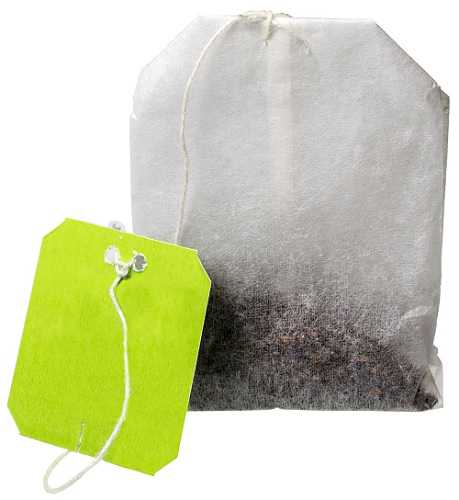
You might not realise it, but many teabags actually contain a thin film of polypropylene, a type of plastic, which is used to bind the teabag together and stop if from falling apart.
This means that they aren’t fully biodegradable, and putting them in your compost bin can contribute to plastic pollution.
Brands that currently use plastic in at least some of their teabags include Tetley, PG Tips, Twinings and Yorkshire Tea, though these brands are working towards biodegradable teabags.
One alternative is simply to buy loose tea, though this isn’t always as convenient as making tea using a teabag.
Some plastic-free teabags include all of Pukka Herbs’ teabags, Twinings’ Loose Leaf range, Aldi’s Specially Selected range and Waitrose’s Duchy range.
5. Use a plastic-free washing up sponge
Most people recommend replacing your washing up sponge at least every few weeks, which means you’ll be throwing out a lot of sponges over time.
Silicone dishwashing sponges such as these can be used for much longer since they are non-porous and don’t hold on to so much bacteria.
They can also be cleaned and disinfected easily, though they may not scrub as effectively as regular dishwashing sponges.
Also, silicone itself is not biodegradable, though it can be easily recycled. Silicone isn’t technically a plastic, though it has similar properties.
There are a few biodegradable washing up sponges available such as this one, which is made from the loofah plant.
6. Refill washing up liquid or make your own
Most washing up liquid comes in a plastic bottle. One way to cut down on plastic waste is to find a local health food shop that lets you refill your washing up liquid so you can reuse the same bottle.
Another option is to make your own washing up liquid using natural non-toxic ingredients. There are several recipes available online (see a couple here).
7. Use a plastic-free washing up bowl or ditch the bowl altogether
It’s hard to find a washing up bowl that isn’t made from plastic, but there are a few enamel washing up bowls available such as this one.
Alternatively, you might opt to stop using a washing up bowl altogether.
According to this article from the BBC, washing up bowls offer the perfect breeding ground for bacteria, and it’s safer to just use the whole sink, though this could mean that you use more water.
See some more plastic-free washing up bowls in this article.
8. Use a wooden chopping board
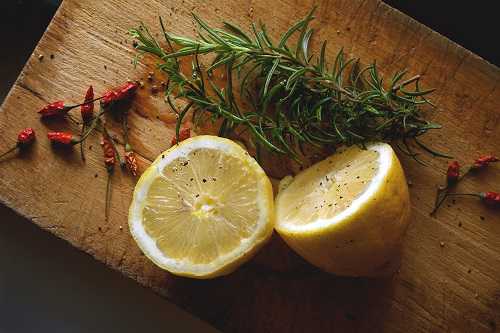
Wooden chopping boards aren’t only more eco-friendly than plastic chopping boards, they can also be safer since plastic chopping boards acquire small grooves where bacteria can accumulate.
Another issue with plastic chopping boards is that little bits of plastic could come loose from the chopping board and enter your food or go down the drain and enter the water supply.
9. Use plastic-free dishwasher tablets
Most dishwasher tablets are wrapped in plastic to prevent them from disintegrating. This includes more eco-friendly brands such as Ecover.
The only dishwasher tablets we could find with an eco-friendly casing are these from Ecoleaf.
You could also try making your own dishwasher detergent. There are a number of recipes online, such as this one.
10. Use a plastic-free kettle
Almost all kettles on sale in the UK contain at least some plastic. The only completely plastic-free one we could find is the Ottoni Fabbrica Italian Top Kettle “Alice Nero”.
There are some other options that only contain minimal amounts of plastic.
11. Make your own yoghurt
It’s quite easy to buy milk in glass bottles, but some dairy products such yoghurt almost always come in plastic packaging.
Luckily yoghurt is quite easy to make yourself. A yoghurt-making machine such as this one from Lakeland could save you money in the long run, though unsurprisingly the machine itself contains plastic.
You can also buy plastic-free yoghurt in glass jars, but it tends to be significantly more expensive than yoghurt in plastic tubs.
12. Use stainless-steel ice cube trays and lolly moulds
If you like to make ice lollies or ice cubes in the freezer, try to use a stainless-steel mould or tray instead of a plastic one. You could also choose BPA-free silicone ice cube trays, which are more environmentally friendly and less toxic than plastic ones.
13. Prepare more of your own food
The UK’s addiction to takeaways and processed foods is one of the main reasons why plastic consumption is so high. Around 100 million ready meals and takeaway meals are consumed in the UK each week.
Making more of your own food using locally grown, seasonal ingredients is one of the most effective ways to reduce your plastic and carbon footprint.
14. Make your own fruit juice
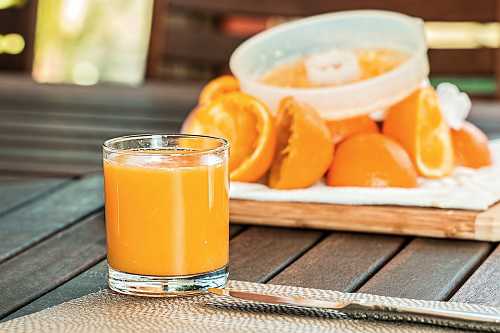
Fruit juice is normally packaged in PET (polyethylene terephthalate) plastic, which can be recycled.
If you want to go plastic-free though, you can make your own fruit juice instead by crushing fruit (bought without plastic packaging, of course), and store it in a glass bottle.
15. Make your own mayonnaise, ketchup and other condiments
Condiments are often packaged in squeezy plastic bottles. Making your own will be more environmentally friendly and also healthier as you won’t be adding artificial flavourings or excessive amounts of salt and sugar.
You can find some recipes for popular condiments here.
16. Store things in glass rather than plastic containers
If you have leftover food, try to store it in a glass container rather than a plastic one.
Even BPA-free plastic containers can leach oestrogen-mimicking chemicals and toxins into your food according to this study published in Environmental Health Perspectives in 2011.
17. Don’t buy bottled water
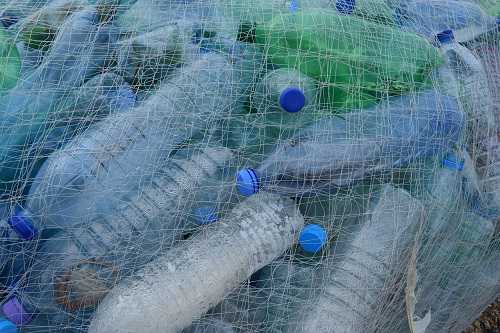
Bottled mineral water is often assumed to be healthier than tap water, but tests have found that the majority of bottled water contains small particles of plastic. Buying water in plastic bottles also contributes to plastic pollution.
Unfortunately, tap water also contains microplastics, though they can be filtered out.
18. Use plastic-free cookware
A lot of kitchen gadgets such as salad spinners, peelers, can openers, garlic presses, colanders and blenders are made from plastic, but there are plastic-free alternatives available.
You can find lots of these items made from stainless steel. You might also want to avoid Teflon pans and instead choose plastic-free stainless-steel, cast iron and aluminium pans.
In the Bathroom
After the kitchen, the bathroom is one of the other main sources of plastic waste. Most cosmetics and personal hygiene products contain or come wrapped in plastic, but there are plastic-free alternatives if you know where to look.
19. Use a bamboo toothbrush
Most people recommend replacing your toothbrush every 3 months or so. Since most toothbrushes are made of plastic and don’t get recycled, this adds up to a lot of plastic waste over the course of a lifetime.
Eco-friendly alternatives such as bamboo toothbrushes are becoming more popular. However, bear in mind that many bamboo toothbrushes use bristles made of plastic.
20. Use an electric toothbrush with recyclable heads
The majority of electric toothbrush heads can’t be recycled. The only brand of electric toothbrush we could find that claims to have recyclable heads was Georganics – see their range of toothbrushes here.
21. Use biodegradable dental floss
Regular dental floss is made from waxed nylon, which is a type of plastic. Biodegradable alternatives include this silk dental floss from Woobamboo, which is made with natural beeswax and organic mint.
You can also buy charcoal dental floss such as this one from Georganics, which is made using sustainable bamboo and comes in plastic-free packaging.
22. Don’t use wet wipes
Wet wipes are single-use products that usually contain polyester, a non-biodegradable plastic. When they are flushed down the toilet, they can contribute to ‘fatbergs’ (large clots of waste in sewers) and enter rivers and canals, contributing to plastic pollution.
According to the BBC, Thames Water remove 30 tonnes of sanitary towels and wet wipes from sewage systems around London every day!
Eliminating single-use plastic waste including wet wipes is one of the main priorities in the UK government’s 25 Year Environment Plan. This has led to rumours that wet wipes will soon be banned, though no plan to ban them has been announced yet.
Biodegradable wet wipes such as these from M&Y are available, though they don’t come in recyclable packaging at the time of writing.
23. Use plastic-free razors
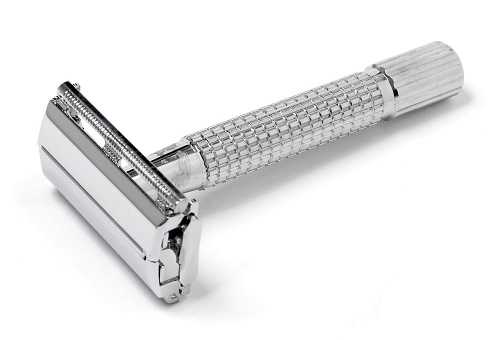
It’s estimated that 2 billion plastic razors are thrown away annually in the US alone, making disposable razors one of the most wasteful products used in the bathroom.
A more eco-friendly choice is to switch to a double-edged safety razor with replaceable blades (see some recommended razors here), which can be used for years.
Safety razors are usually marketed at men rather than women, though there’s no reason why women can’t use them too.
24. Use plastic-free toothpaste
Almost all toothpaste comes in a plastic tube which is thrown out with the general waste rather than recycled. However, plastic-free alternatives are starting to enter the market.
Denttabs Toothpaste Tablets are small tablets that come in a wooden box and turn into toothpaste when you chew them. Georganics also sell a range of natural toothpastes such as this peppermint toothpaste that come in glass jars rather than plastic tubes.
See some more plastic-free toothpastes here.
25. Use plastic-free toilet paper
It’s hard to find completely plastic-free toilet paper. Even if you buy 100% recycled toilet paper, it will usually come wrapped in plastic, and most recycled toilet paper contains BPA.
One of the most eco-friendly options available in the UK is Ecoleaf from Suma, which uses biodegradable packaging.
26. Use plastic-free shampoo
Most shampoo comes in plastic bottles, and also contains potentially harmful artificial chemicals such as SLS, phthalates and parabens. One alternative to using bottled shampoo is to use shampoo bars, which usually come packaged in cardboard. Shampoo bars typically contain gentle and natural ingredients, and last a long time.
You can also try following the “low-poo” approach to haircare, which will reduce your overall use of shampoo and other hair products.
27. Use plastic-free deodorant
Roll-on deodorants typically come in plastic containers and often contain aluminium, which has been linked to breast cancer.
A healthier and more environmentally friendly option is to choose a natural deodorant such as The Natural Deodorant Co.’s Clean Deodorant Balm, which comes in a glass jar (though the lid is unfortunately made of plastic).
28. Swap shower gel for soap bars
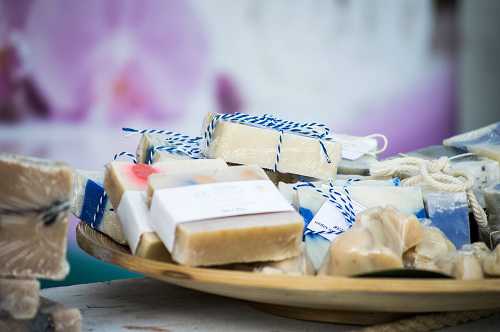
Like shampoo, shower gel usually comes in a plastic bottle. One completely packaging-free option is Lush Naked soap bars, though they contain synthetic ingredients. You can also choose natural soap bars that come in recyclable cardboard packaging.
29. Use eco-friendly sanitary pads and tampons
Most tampons and sanitary pads are made from a combination of materials, including plastics. Sanitary products are often flushed down the toilet, meaning that the plastics they contain enter the water supply, and many end up in the ocean or washed up on beaches.
As well as causing pollution, applying plastics to a highly absorptive part of the body also isn’t good for your health.
There are a few eco-friendly options available:
- Organic cotton tampons such as these from Natracare
- Reusable or washable sanitary towels
- Menstrual sea sponge tampons
- Menstrual cups
30. Stop using cotton buds
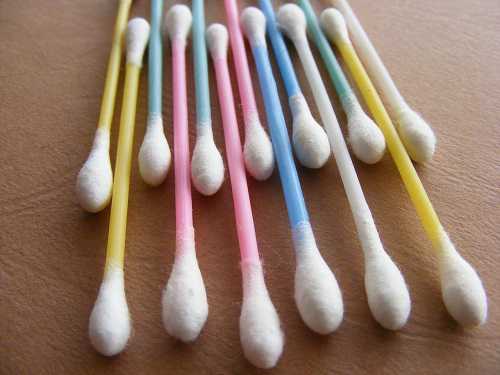
Cotton buds usually have a plastic stem and are discarded rather than recycled. Doctors don’t recommend using cotton buds to clean the ears, as they can push ear wax further into the ear and potentially damage the ear drum.
If you use cotton buds to clean your ears, stopping doing so is an easy way to reduce your plastic footprint.
The UK has the highest per-capita consumption of cotton buds in the EU (source), and banning them has been proposed to tackle this.
Around the Home
Here are 5 more ways you can use less plastic around the home.
31. Make your own cleaning products
Regular cleaning products are bad for the environment in a number of ways.
Not only do they come in plastic containers, they also contain toxic chemicals. You can make eco-friendly alternatives yourself using simple natural ingredients such as white vinegar, lemon juice and bicarbonate of soda. You can also buy refillable cleaning products to help reduce your plastic use.
32. Reduce pollution from microfibres in clothes
Synthetic clothes such as polyester fleeces contain plastic microfibres, which rub off in the washing machine and can get into seawater. The best way to avoid this is to choose clothing made from natural fibres such as wool.
If you do need to wash synthetic clothing in the dishwasher, you can use a Guppyfriend bag, which you put in the washing machine to trap microfibres.
33. Buy powered laundry detergent in a cardboard box
Powdered laundry detergent usually isn’t very eco-friendly, but buying powdered laundry detergent in a cardboard box will reduce your plastic usage when compared to buying liquid detergent in a plastic bottle or powered detergent in individually wrapped plastic capsules.
34. Choose non-plastic children’s and pet’s toys
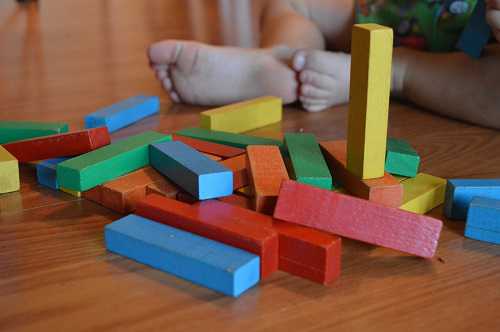
The majority of children’s toys are made from plastic, which isn’t good for the environment and could be harming kids’ health since they often contain materials such as BPA and phthalates.
This is particularly concerning when you consider that young children often put toys in their mouths, increasing exposure to potentially harmful chemicals.
Choosing non-plastic toys can be more expensive, but they are often higher quality and last longer.
35. Use a real Christmas tree
Most plastic Christmas trees are made using PVC, which can release volatile organic compounds (VOCs) into the air, potentially damaging our health. A real Christmas tree might be more expensive, but it will be healthier.
To make sure your tree is eco-friendly, choose a locally grown one, ideally from a grower who has been certified by the Forest Stewardship Council (FSC).
At the Supermarket
Supermarkets are crucial in the fight against plastic waste as the majority of plastic waste in the UK comes from packaging and we buy most of our food in supermarkets.
Many of the UK’s biggest supermarkets have now signed up to support the UK Plastics Pact, which is a voluntary pledge to make packaging more sustainable.
Here are 8 ways you can use less plastic while shopping at the supermarket.
36. Take reusable bags for fruit and vegetables
The small see-through plastic bags you get at the supermarket for fruit and vegetables are usually only used once and not recycled.
A more eco-friendly alternative is to use reusable bags such as these made by Veggio. These bags are still made of plastic, but they can be washed and reused, so you’ll use a lot less plastic in the long run.
37. Choose options with less packaging

Buying loose fruit and veg and putting them in a reusable bag such as the one mentioned above will use a lot less plastic than buying fruit and veg packaged in plastic.
You can also choose to avoid buying anything with excessive amounts of plastic packaging, and choose options with less packaging instead. Vote with your wallet, and try to shop at more environmentally friendly supermarkets when possible.
38. Buy in bulk
Buying larger packets of things will usually help reduce your plastic footprint.
For example, if you have to buy washing up liquid in a plastic bottle, you will consume less plastic if you buy one huge 5-litre bottle and decant it into a smaller bottle than if you repeatedly buy a 500-ml bottle.
39. Buy less processed food
Buying and consuming processed foods such as ready meals, biscuits and desserts will usually produce a lot more plastic waste than preparing your own food from fresh ingredients.
40. Bring your own bag(s)
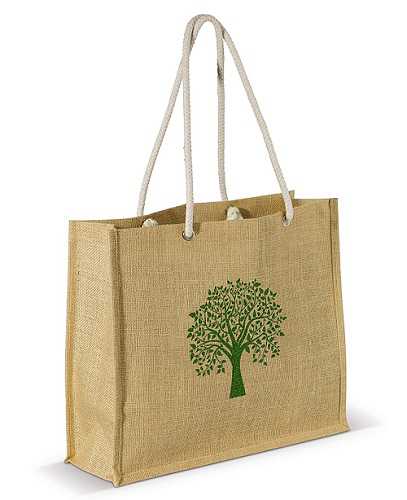
The number of plastic bags issued by major retailers dropped 85% in the year following the introduction of the 5p plastic carrier bag charge in England in 2015.
Most supermarkets offer large “bags for life”, but these bags are still made of plastic and can break quite easily. A more sustainable option would be to buy some bags made from a material such as cotton or hessian.
41. Buy bread that comes in a paper bag
Most bread sold in the UK comes in plastic wrapping, which often isn’t recyclable. Buying bread in a paper bag from the supermarket’s bakery section is one way to reduce your plastic waste.
42. Buy wine in bottles using natural cork stoppers
Many wine bottles come with synthetic corks, which are made to look like natural cork, but are actually made of plastic. If you buy wine with natural corks, you might want to donate them to Recorked UK, a cork recycling scheme who donate a percentage of their profit to charity.
43. Look for the plastic-free “trust mark”
The plastic-free trust mark is a food packaging label introduced in May 2018 which lets you know that an item doesn’t contain any plastic.
Iceland was the first supermarket to use it on its own-brand products, but other supermarkets are expected to follow suit. Iceland have also pledged to completely remove plastic from its own-brand range by 2023.
In Cafes and Restaurants
Cafes, coffee shops and restaurants produce huge amounts of plastic waste each year. Here are 3 ways to make eating and drinking out more sustainable.
44. Use a reusable coffee cup
Roughly 99.75% of disposable coffee cups used in the UK aren’t recycled, and the number of coffee cups thrown away each year was estimated to be 2.5 billion in 2011 (source).
Disposable coffee cups are difficult to recycle because they contain a mixture of paper and plastic to make them both heat and leakproof.
Most coffee shop chains now sell reusable cups, and some offer a discount for using them. Pret a Manger is one of the most generous chains, offering a 50p discount if you use a reusable cup.
There are lots of great reusable coffee cups on the market, though they usually have plastic lids.
45. Don’t use plastic straws
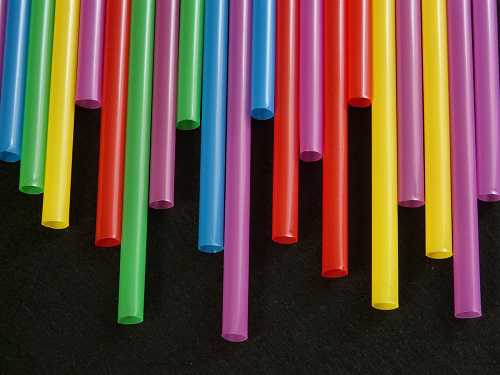
Plastic straws are expected to be banned in the UK at some point due to their contribution to plastic pollution.
If you or your child needs to use a straw, you can buy reusable bamboo or stainless-steel straws and take it with you when going to restaurants and cafes.
46. Take your own container to restaurants for leftovers
Restaurants often package leftovers in polystyrene boxes, which can be recycled but can leach chemicals into food.
Producing polystrene also creates pollution. One alternative is to take your own container to restaurants if you like to take leftovers home.
While Travelling, Exercising & On the Go
Here are 8 ways you can use less plastic while travelling, exercising and on the go.
47. Use a reusable water bottle
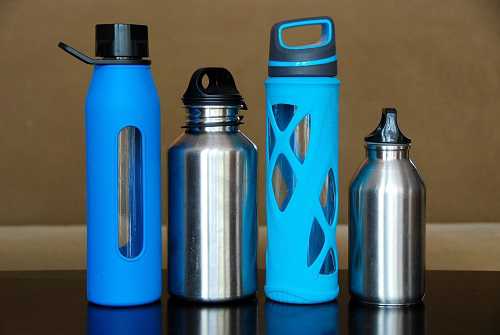
It’s estimated that a million plastic bottles are bought every minute across the world, and despite the fact that plastic bottles are easy to recycle, many end up in the oceans. Recycling plastic bottles isn’t completely environmentally friendly either, as the process involves using putting soap and detergent into the water supply.
A better alternative is to buy a reusable BPA-free water bottle and remember to take it with you when you’re out and about.
One of the reasons why bottled water remains so popular is because it’s not easy to find somewhere to refill a water bottle while travelling.
A national campaign called Refill has recruited over 12,000 “Refill Stations” across the UK where you can refill a bottle with tap water for free. These include pubs, cafes, hotels and other businesses. You can download the Refill app here to find Refill Stations near you.
48. Use a plastic-free yoga mat
Yoga may be an ancient practice associated with health, but modern yoga mats are usually made from PVC, a synthetic plastic to which endocrine-disrupting phthalates, lead and cadmium are added to give the mat its texture.
Yoga mats also can’t be recycled, and manufacturing them releases carcinogenic dioxins into the air.
A safer and more environmentally friendly option is to buy a plastic-free yoga mat such as this one from Sundried, which is made from natural jute.
49. Use a plastic-free lunchbox
There are now lots of plastic-free lunchboxes available, including options made from stainless steel, wood and cotton. Using one of these lunchboxes is a more eco-friendly choice and will also mean you won’t have any chemicals from plastics leaching into your food.
50. Use plastic-free sunscreen
Sunscreen usually comes in a plastic tube, and often contains artificial chemicals that can pollute the sea and negatively affect our health.
One natural plastic-free alternative is Shade, which is a mineral sunscreen that comes in a metal tub and only contains four ingredients: organic coconut oil, organic shea butter, unrefined beeswax and zinc oxide.
51. Use reusable non-plastic plates & utensils when travelling
If you’re travelling or camping, you can reduce your plastic footprint by taking reusable non-plastic plates and utensils with you.
52. Prepare your own snacks
If you’re going on a long journey, it’s a good idea to prepare your own snacks such as fruit, biscuits, energy bars, trail mix etc. and carry them in a reusable lunch box. This will mean you won’t need to buy snacks in plastic wrappers.
53. Take your own headphones on plane journeys
Long-haul flights usually offer free earphones in plastic wrapping for the in-flight entertainment system. The earphones themselves will be thrown away unless you take them off the plane with you.
A better alternative is to take your own headphones or earphones to avoid this unneccesary waste.
54. Don’t use free toiletries in hotels
Toiletries in hotels usually come in small plastic bottles, which means they use more plastic per millilitre of product than large bottles.
While they may be tempting, it would be more environmentally friendly not to use them.
At Work
You can apply a lot of the tips in the section above about reducing plastic in the home to the office as well, but there are some more office-specific things you can do too.
It will be important to get everyone on board by making sure that all members of staff are aware of the importance of reducing plastic waste.
Here are some ways to reduce plastic usage in the office.
55. Conduct a plastic waste audit
Every office is different, so every office will produce different kinds of plastic waste.
A good place to start is to conduct a plastic waste audit where you establish what the bulk of your plastic waste is made up of. That way, you can prioritise actions based on what will have the biggest impact.
56. Use refillable pens
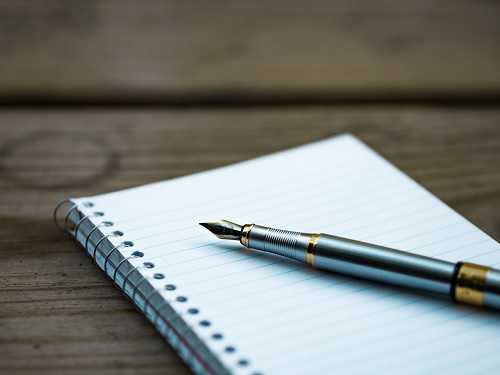
Although pens aren’t used as often as they were in the past, disposable pens still create a lot of plastic waste.
We couldn’t find any up-to-date statistics about exactly how many pens are thrown away each year, but we did learn that Bic alone has sold over 100 billion disposable pens since the company launched in 1950.
You can reduce your office’s plastic footprint by switching to old-fashioned reusable fountain pens.
Fountain pens are more expensive and less convenient though, so you might want to aim to reduce pen and paper usage and do more things digitally instead.
57. Encourage staff to bring homemade lunches or offer lunch
Food packaging is one of the main contributors to single-use plastic waste in the UK, so encouraging staff to bring homemade lunches rather than buying takeaway or prepared food could have a big impact on your office’s plastic footprint.
If you have the resources, you could even offer a meal to staff and provide them with plates and utensils.
58. Replace disposable cups with washable glasses
If you have a water cooler, you could replace disposable plastic cups with washable glasses to reduce your plastic waste.
You can also replace any tea/coffee machines that dispense plastic cups and switch to using reusable mugs instead.
59. Encourage staff to use reusable bottles
Encouraging staff to use reusable stainless-steel bottles rather than buying bottled water will help reduce your plastic footprint.
If you’re feeling generous, you could buy a reusable bottle for each member of staff.
60. Avoid buying unnecessary stationary
Many businesses have more stationary than they need. One way to avoid this is to create a stationary library where people can borrow plastic items such as rulers and calculators so that each member of staff doesn’t need to have their own.
61. Make eco-friendly choices when ordering supplies and equipment
This is related to the point above—you should avoid ordering excessive amounts of plastic supplies and equipment, and buy plastic-free alternatives where possible.
62. Recycle as much plastic as possible
Make sure that your office has a recycling bin and that staff know which plastic items can be recycled and which can’t.
63. Switch to plastic-free tea
Most teabags from major brands contain small amounts of plastic to hold them together. Plastic-free options include Pukka Herbs and Waitrose’s Duchy range.
64. Get milk delivered to the office in glass bottles
This is a simple way to reduce plastic usage and since most offices get through a lot of milk each year, it could make a big difference.
65. Make a company commitment to eco-friendly practices
This could be an informal commitment or a written statement. You could even go as far as banning certain items such as plastic bottles from the office.
66. Make it competitive
If you have different departments/office spaces, you could measure the amount of plastic waste produced by each department/office and have a league table, perhaps with a prize for the department that used the least plastic each month.
Other Things You Can Do
Here are 7 more things you can do to reduce your plastic waste.
67. Campaign to reduce plastic packaging
There are a number of campaigns you can get involved in and petitions you can sign to put pressure on retailers and manufacturers to reduce their use of plastic packaging.
Here are just a few of them:
- Greenpeace’s petition to get UK supermarkets to go plastic free – see here
- Friends of the Earth’s petition to get the UK government to take action to dramatically reduce the amount of plastic waste entering the ocean – see here
- Surfers Against Sewage have a number of petitions and campaigns you can get involved in aimed at reducing plastic pollution in the ocean – see here
You can also write to shops directly to let them know that you would like them to reduce the amount of plastic packaging they use.
68. Make/grow your own food

It’s still extremely difficult to avoid plastic packaging if you buy ready-made food and shop in the supermarket. Growing your own vegetables and preparing as much food as possible from fresh ingredients is a very effective way to reduce your plastic footprint over the long term. You can also try foraging for seasonal berries and mushrooms. See our seasonal food planner here.
69. Choose plastic-free chewing gum
You might not realise it, but most chewing gum contains plastic.
Chewing gum is also estimated to create roughly 100,000 tonnes of plastic pollution a year. In 2018, Iceland launched the first plastic-free chewing gum available in UK supermarkets, Simply Gum, which is completely biodegradable.
Another plastic-free gum which you can order online is Chewsy, which is sugar-free and is made from natural ingredients.
70. Avoid using plastic lighters
Plastic lighters are some of the most frequently found plastic items washed up on beaches, and they can be deadly when ingested by seabirds and marine wildlife. You could use traditional matches or buy a refillable metal lighter.
71. Use reusable cloth nappies
It’s estimated that 8 million disposable nappies are thrown away in the UK every day. Most go to landfill, where they can take up to 500 years to decompose.
Reusable nappies are much more sophisticated than they used to be, making them safer and easier to use.
Many reusable cloth nappies now have biodegradable liner sheets which can be flushed away, making them very hygienic. They should also work out cheaper in the long run.
One downside is that disposable nappies should be washed at a temperature of 60 °C, which uses electricity. However, it also takes electricity to manufacture and dispose of disposable nappies.
72. Buy essential plastic items second-hand
Some products aren’t available in plastic-free varieties yet. If you need to buy a plastic item such as a computer keyboard, you can reduce your plastic waste by buying it second hand.
73. Give plastic-free gifts
You can help someone else live a more plastic-free life and help increase their awareness of plastic pollution by buying them zero-waste, plastic-free gifts. You could buy them a bamboo toothbrush, a reusable coffee mug or some plastic-free toiletries.
Shops with Less or No Plastic
At the moment, it’s generally more expensive and less convenient to buy from shops that use less or no plastic packaging, but things are becoming easier and more competitive as the market responds to consumers’ desire to shop in a more eco-friendly way.
Here are some online and physical shops in the UK that use less or no plastic packaging.
Online Shops
The Plastic Free Shop
The Plastic Free Shop is a Bristol-based online shop that sells a range of completely plastic-free products for the kitchen, bathroom and garden including many of the plastic-free products mentioned in this article.
No Plastic Shop
No Plastic Shop is another online shop selling a range of plastic-free items.
Wearth London
Wearth London is an online department store selling goods from independent eco-friendly and ethical UK brands. Not all the products they sell are plastic-free, but they have a large plastic-free collection on their website.
Plastic Freedom
Plastic Freedom is another online store selling a variety of plastic-free products.
Physical Shops
Here are some physical shops that have a plastic-free section or allow you to refill your own containers with food.
Some of them are mobile shops that travel around stopping at different locations within a particular part of the country.
- Bamboo Turtle – Letchworth Garden City
- Bulk Market – Hackney, London
- Cariad Wholefoods – Blandford Forum, Dorset
- Charlotte’s Cupboard – Sussex (mobile shop)
- Cut the Wrap – Ulverston, Cumbria
- Dash Vegan – Nottingham
- Gillian’s Larder – Helston, Cornwall
- Harmless Store – Wood Green, London
- Hetu – Battersea, London
- Incredible Bulk – Cornwall (mobile shop)
- Jarfull – Harrogate
- Locavore Grocery Store – Glasgow
- Natural Weigh – Crickhowell, Powys
- Nourish of Topsham – Topsham, Devon
- Planet Organic – London (several locations)
- Refill Store – Truro
- Scoopway Health Foods – Bristol
- The Clean Kilo – Birmingham
- The New Leaf Co-Op – Edinburgh
- The Zero Waste Shop – Totnes, Devon
- Unwrapped – Sheffield
- Wastenot – Brighton
- Waste Not Want Not – Bridport, Dorset
- Wild Thyme Wholefoods – Portsmouth
- Zero Green – Bristol
See some more zero-waste grocery shops here.
Why Use Less Plastic?
Plastic items take up to a thousand years to decompose. Even when they do decompose, they carry on polluting as they release toxins into the soil and water. Plastics can be deadly to animals and birds, and can also pollute the soil and damage our health.
Effect on Marine & Bird Life
An estimated 8 million metric tonnes of plastic enter the ocean each year according to a 2015 study carried out by the NCEAS Marine Debris Working Group at UC Santa Barbara. Plastic items can look like food to marine life and seabirds, who often ingest them.
One study conducted by North Highland College UHI on seabirds in Northern Europe found that 74% of the birds studied had ingested plastic.
The level of plastics ingested by seabirds is thought to be even higher in other parts of the world, particularly the southern Indian, Pacific and Atlantic oceans (source).
Researchers from CSIRO and Imperial College London estimated that around 99% of seabirds will be ingesting plastic by 2050 (source).
The BBC’s Blue Planet II series, broadcast in 2017, made people more aware of the extent of the damage plastic usage is doing to the marine environment.
Ingesting plastic can cause marine life and birds to die as a result of intestinal injury or starvation caused by plastic limiting the storage capacity of the stomach.
Effect on Human Health
Ingesting plastic via fish
If we consume fish, we are consuming some of the plastic they have ingested. A 2018 study on deep-water fish in the Northwest Atlantic carried out by the National University of Ireland Galway found that 73% of fish had plastic in their guts.
Most of the fish we eat in the UK comes from the Northwest Atlantic, so this isn’t good news for our health.
Effect on hormones
We are also exposed to plastics in our everyday life. One of the most harmful plastics is bisphenol A (BPA).
BPA is often used in water bottles and food containers, and can leech into food and drink and be ingested. It’s an endocrine disruptor, which means it affects hormone levels, disrupting ovulation and puberty and affecting the balance between oestrogen and testosterone.
Studies such as this one suggest that the hormone-disrupting effects of plastics such as BPA may be to blame for falling rates of male fertility.
A 2005 study carried out in the USA found BPA in 95% of human urine samples, and it can be reasonably assumed that BPA levels will be similar in the UK.
It’s almost impossible to completely avoid BPA, but BPA-free food containers and bottles are becoming more popular.
There’s still a limited amount of research available into the effects of many plastics, so just because a particular plastic hasn’t been proven to be harmful this doesn’t mean it’s safe.
According to this study, some BPA-free plastic products actually released more oestrogenic chemicals than products containing BPA.
Microplastics
Microplastics are tiny pieces of plastic that measure less than 5 mm in diameter. They are found in various materials including many cosmetics and synthetic clothes.
When cosmetics are washed off or synthetic clothes are put in the laundry, microplastics enter the water supply, and can then be ingested in tap water.
Microplastics also enter the oceans through various sources including road runoff, wastewater treatment systems and wind transfer.
They are then ingested by fish, and are therefore present in most of the fish we consume. Microplastics are also present in table salt.
They can also end up in the sewage system and then become part of fertiliser used on fields. Once the fertiliser dries out, it can be picked up by the wind and then breathed in by humans.
This means we are both ingesting and inhaling microplastics. There hasn’t been enough research to know what effects microplastics have on humans yet, but it’s unlikely they are good for us.
How Much Plastic Waste Are We Producing?
Here are some shocking statistics about plastic usage in the UK:
- An estimated 5.2 million tonnes of plastic waste were produced in 2018
- Just 31% of plastic waste is recycled
- Packaging accounts for 67% of plastic waste
- The UK has the 5th highest consumption of single-use plastics in the EU
Data source: WWF Plastics Consumption Report
What Is Single-Use Plastic?
When people talk about reducing plastic usage, the focus is usually on reducing the use of single-use plastic.
Single-use plastics are plastics that are usually used once before being thrown away. This includes water bottles, food wrappers, disposable cups and straws.
According to EcoWatch, 50% of plastic is used once before being thrown away.
Focusing on reducing your use of single-use plastic will have the biggest effect on your total plastic usage.
However, it’s also a good idea to reduce your use of reusable plastics such as food containers due to the health effects of exposure to plastic.

Laurence is the founder and editor of Naturaler. He’s been working in the online world for over 5 years and is trying to live a more natural and eco-friendly lifestyle every day.

